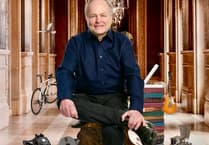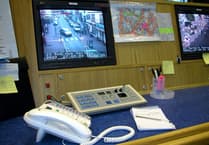On 13th June Ross Vaga Probus members were entertained by club member, Ashley Letts, to a very informative talk on some of the fighting gliders used by allied forces during WW2. Successful use of assault gliders by Germany early on prompted the allies to speed up development of their own gliders and the first British glider to arrive on the scene was the Airspeed Hotspur with a crew of 2 and a load of 8 fully equipped troops. This was subsequently deemed unsuitable for operational use and became a training glider. It was quickly replaced by the Airspeed Horsa which could carry up 25 troops or their equivalent weight in equipment. It was made of wood and manufactured in sections which were assembled at the airfield ready to use. The tug aircraft were generally 4 engine bombers which had been relegated to secondary activities but the upgraded DC3 Dakota was increasingly used as the war progressed.
The Hadrian (WACO) was designed in Ohio and manufactured throughout the USA in very large numbers and could carry 13 troops or equivalent weight loads of equipment and in the right conditions and undamaged could be snatched from the grounds by an overflying tug aircraft. The Hamilcar was made in the UK by General Aircraft and was huge. It could carry 60 fully equipped troops and could even carry a small tank or 2 Bren gun carriers with crews. Because of its size, however, it was generally viewed as a single use glider.
Assault gliders played a significant part in many important operations including Overlord, Market Garden and Varsity which proved to be the most successful allied airborne operation of WW2.
In 2001, the West Midlands Glider Pilot Regiment and the Army Air Corps Association set out plans to build a full -size replica Horsa. A large hangar was made available at RAF Shawbury and the Assault Glider Trust was formed later that year and the construction of the replica began.
Ashley joined the project in 2007 alongside some 50 volunteers and over the years the Trust managed to acquire a DC3 Dakota, a Tiger Moth and the tubular fuselage from a Hadrian glider. All were refurbished with the intention of being put on display at the RAF Museum Cosford but these plans fell through and, as the hangars at Shawbury were required for operational reasons, the individual aircraft of the collection were dispersed elsewhere.
Vaga Probus is a men’s group that meets twice a month in Ross. Visitors are very welcome, if you have an interest in visiting or indeed have a talk you would like to deliver, please contact the Secretary on [email protected]. Further details are on the website at www.vaga-probus-ross.org.uk




